University of Florida/Egm4313/IEA-f13-team10/R4
Report 4
Problem 1: Basic Rule to Solve Non-Homogeneous ODE
Problem Statement
Solve the ODE:
With the initial conditions:
Plot the homogeneous solution
Plot the particular solution
Plot the overall solution
Solution
Homogeneous solution:
So that
Solving for the initial conditions:
So the homogeneous solution is:
Choose the particular solution to be:
So that:
Substitute in the original equation
Sorting by the x term gives:
Giving us the system of equations:
The Matlab code we made to solve this was:
A = -2/9;
B = -(42*A)/9;
C = -(42*A + 36*B)/9;
D = -(30*B + 30*C)/9;
E = -(20*C + 24*D)/9;
F= -(12*D + 18*E)/9;
G = (8-(6*E + 12*F))/9;
H = -(2*F + 6*G)/9;
To get (rounded to the nearest tenth):
A= -0.2
B= 1.0
C= -3.1
D= 6.9
E= -11.5
F= 13.8
G= -9.9
H= 3.5
So now the particular solution is:
The overall solution can be found by:
To solve for C_1 and C_2 (which are different from the homogeneous solution constants) we find:
The overall solution is:
Plot the homogeneous solution:
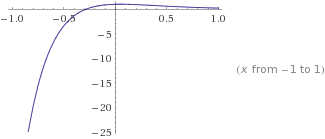
Plot the particular solution:

Plot the overall solution:
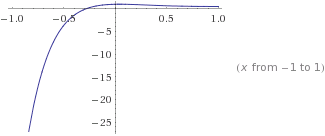
Honor Pledge
On our honor, we solved this problem on our own, without aid from online solutions or solutions from previous semesters.
Problem 2: Sum Rule to Find Particular Solution
Problem Statement
Part 1
Use the Basic Rule 1 and the Sum Rule 3 to show that the appropriate particular solution for:
Part 2
Derive the Basic rule and the Sum rule, instead of just using them, based on the linearity
of the differential operator to obtain the expression (trial solution) for the particular solution
Solution
With n =7 we get
From report problem 1 it was already found that:
Honor Pledge
On our honor, we solved this problem on our own, without aid from online solutions or solutions from previous semesters.
Problem 3: Method of Undetermined Coefficients
Problem Statement
Problem Set 2.7, problem 5
Find a real, general solution. State which rule you are using. Show each step of your work.
plot on separate graphs:
(1) the homogeneous solution ,
(2) the particular solution ,
and (3) the overall solution .
Solution
We start by finding the general solution of the homogeneous ODE
The characteristic equation of the homogeneous ODE is
The roots are double real roots.
The general solution of the homogeneous ODE is
Now we solve for the particular solution of the nonhomogeneous ODE
We use the method of Undetermined Coefficients
We now substitute the values of into
Now we equate the coefficients of like terms on both sides
Now we solve these equations for the coefficients
These values are substituted into to get the particular solution of the ODE
The general solution of the ODE is
In order to determine the values of we use the initial conditions
The general solution of the ODE is
Plot the homogeneous solution:
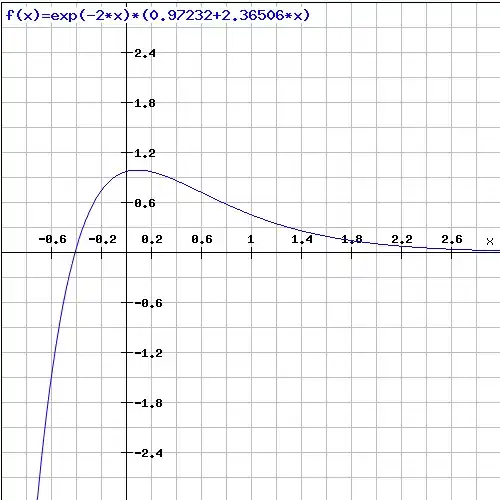
Plot the particular solution:
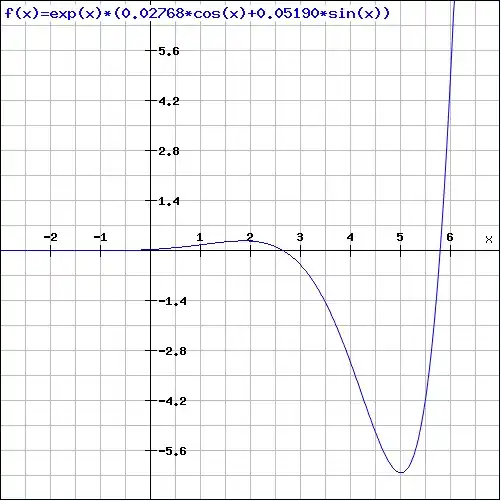
Plot the overall solution:

Honor Pledge
On our honor, we solved this problem on our own, without aid from online solutions or solutions from previous semesters.
Problem 4: Method of Undetermined Coefficients
Problem Statement
Problem Set 2.7, problem 5
Find a real, general solution. State which rule you are using. Show each step of your work.
plot on separate graphs:
(1) the homogeneous solution ,
(2) the particular solution ,
and (3) the overall solution .
Solution
We start by finding the general solution of the homogeneous ODE
The characteristic equation of the homogeneous ODE is
The roots are double real roots.
The general solution of the homogeneous ODE is
Now we solve for the particular solution of the non-homogeneous ODE
By using the definition of hyperbolic trigonometric functions we can convert .
Our non-homogeneous ODE can now be written as:
Since the replacement of is the sum of two functions we can use the sum rule for the method of undetermined coefficients.
We now substitute the values of into
Now we equate the coefficients of like terms on both sides and solve for the coefficients
These values are substituted into to get the particular solution of the ODE
The general solution of the ODE is:
In order to determine the values of we use the initial conditions
The general solution of the ODE is
Plot the homogeneous solution:
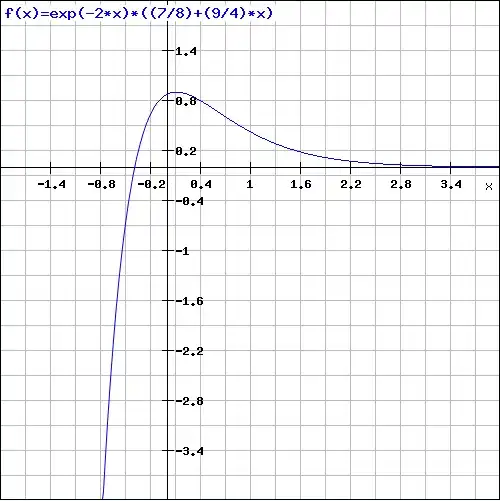
Plot the particular solution:
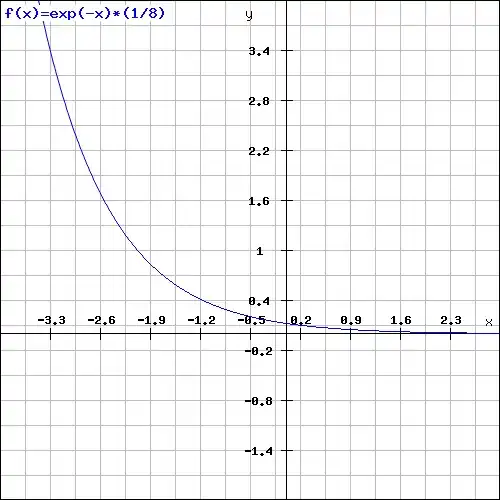
Plot the general solution:

Honor Pledge
On our honor, we solved this problem on our own, without aid from online solutions or solutions from previous semesters.
Problem 5: Display of Equality by Series Expansion
Problem Statement
Expand the series on both sides of (1)-(2) p.7-12b to verify these equalities
Solution
Evaluating the right-hand side of (1):
Now evaluating the left-hand side of (1):
So both sides are equal.
Now evaluating the right-hand side of (2):
The left-hand side of (2) expands into the following:
So both sides are equal.
Honor Pledge
On our honor, we solved this problem on our own, without aid from online solutions or solutions from previous semesters.
Problem 6: Taylor Series to Solve ODE
Problem Statement
and
Solution
The taylor series for the excitation is
from n=0 to infinity
For n=3, this equals
For n=5, this equals
For n=9, this equals
For n=3,
Plugging these into the original equation using the taylor series approximation as the excitation,
Rearranging the coefficients,
Equating x^6 coefficients, A=-45/4
Equating x^5 coefficients, B=405
Equating x^4 coefficients, C=-118461.833
Equating x^3 coefficients, D=2770183.992
Equating x^2 coefficients, E=-37069430.492
Equating x^1 coefficients, F=-594423101.472
Equating x^0 coefficients, G=4233788358.69
The graph shown is the taylor series for cos(2x) for the 0th through 3rd order.
_graph.png)
Honor Pledge
On our honor, we solved this problem on our own, without aid from online solutions or solutions from previous semesters.
Problem 7: Taylor Series Expansion of the log Function
Problem Statement
Use the point
Solution
The taylor series expansion for around up to 16 terms is
Plots of taylor series expansion:
Up to order 4
Up to order 7
Up to order 11
Up to order 16
The visually estimated domain of convergence is from .8 to .2.
Now use the transformation of variable
If has a domain of convergence from then converges from
Honor Pledge
On our honor, we solved this problem on our own, without aid from online solutions or solutions from previous semesters.